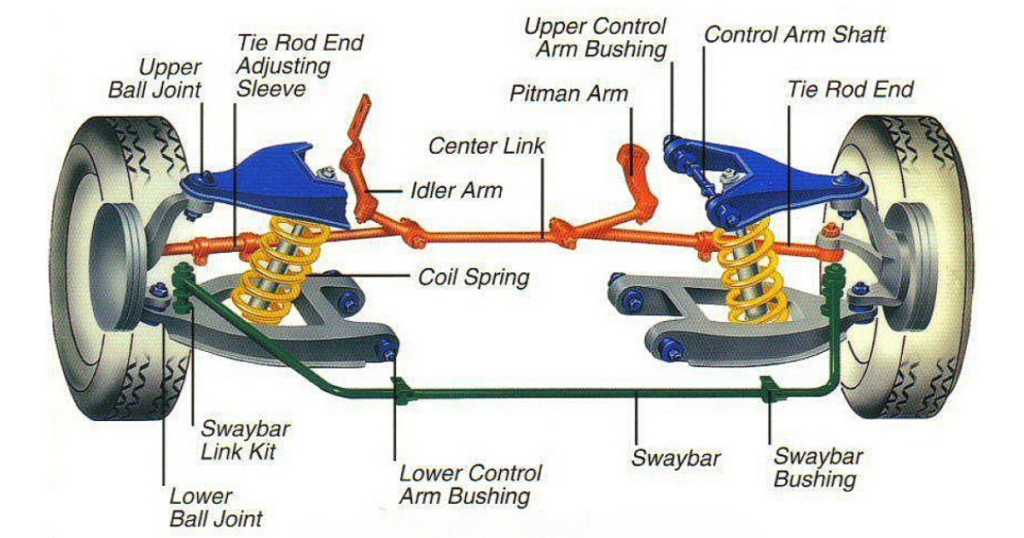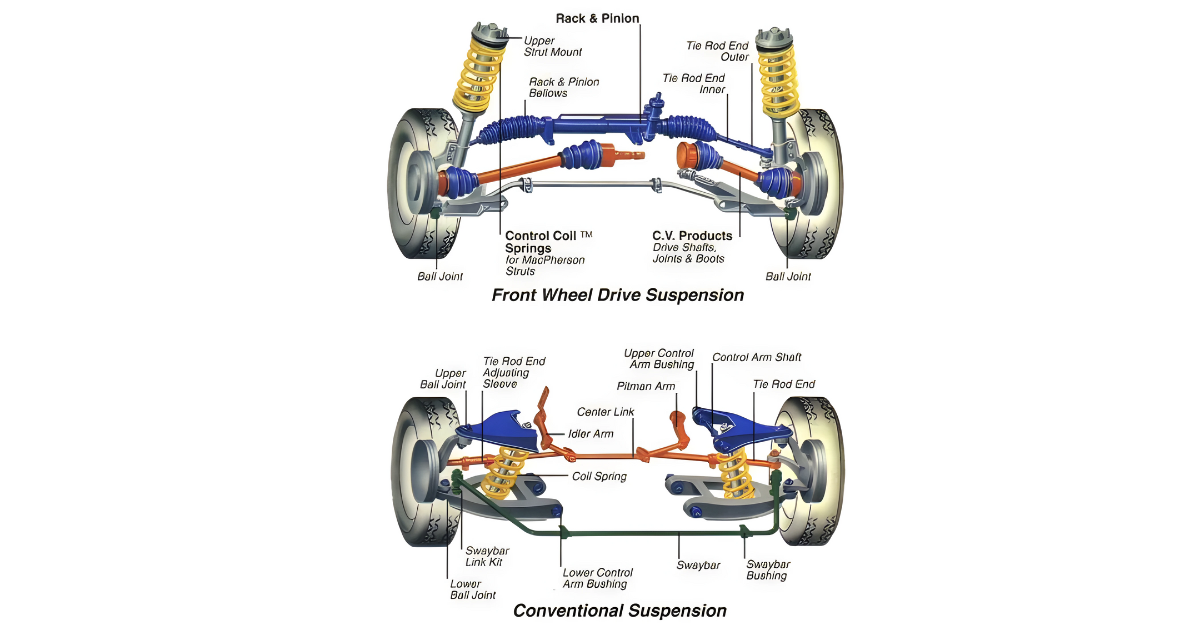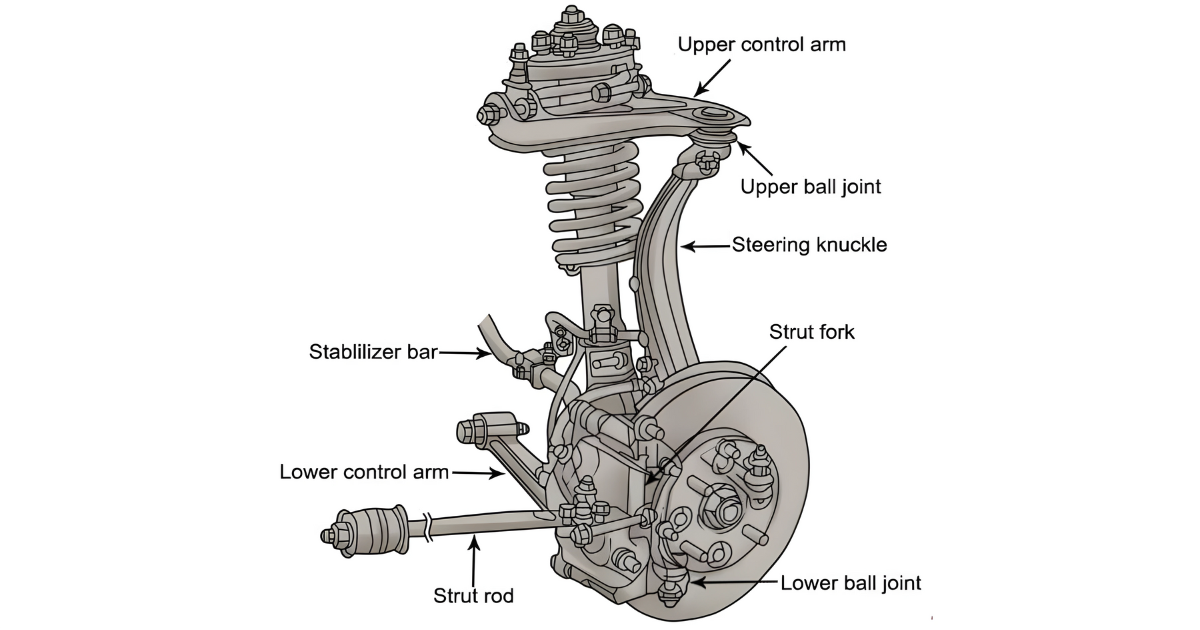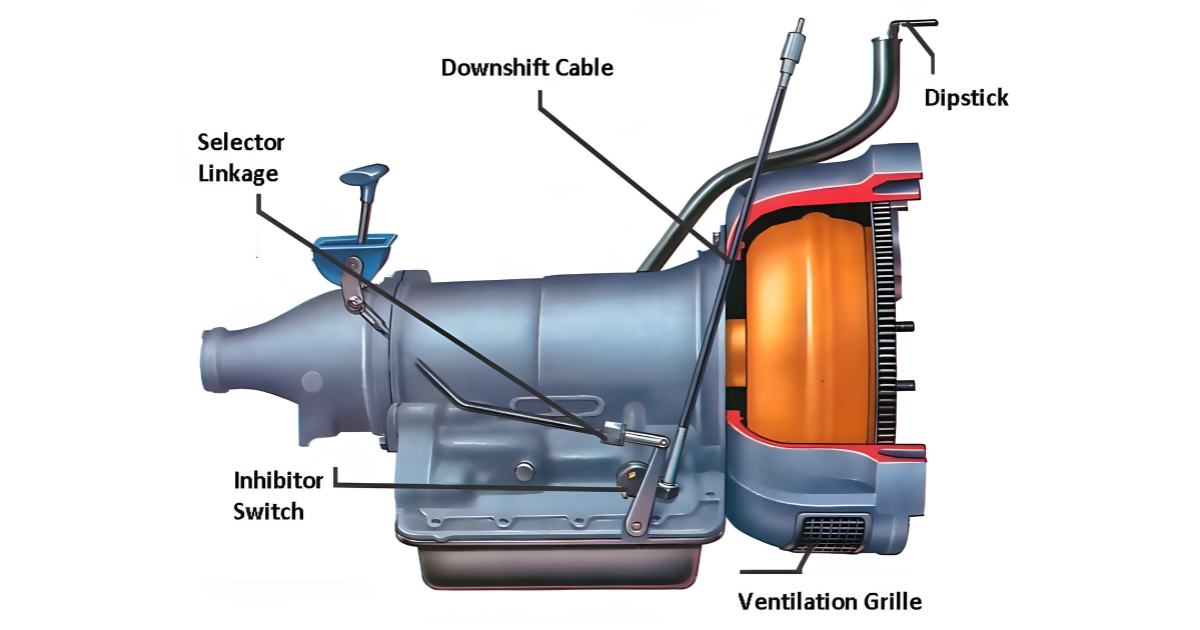Assuring a controlled and comfortable ride is the suspension system’s primary function in the technical world of vehicle design. Vehicles usually have two types of suspensions: front-wheel-drive (FWD) suspension and conventional suspension. These determine how the vehicle moves on the road.
To help you better understand the driving experiences offered by these two suspension systems, let’s compare and evaluate their features.
Front Wheel Drive Suspension: Efficient and Space-Savvy

Front-wheel-drive vehicles are celebrated for their efficient use of space, with the engine and transmission typically located in the front of the car. The front-wheel drive suspension, therefore, carries the dual responsibility of supporting the engine’s weight and facilitating the vehicle’s steering.
In a typical FWD suspension setup, MacPherson struts are commonly employed in the front. These struts combine a shock absorber and a coil spring into a single unit, simplifying the design and saving space. This layout allows for a more compact engine bay, optimizing interior space for passengers.
Conventional Suspension: The Versatile All-Rounder

Conventional or rear-wheel-drive (RWD) suspension, on the other hand, adopts a more traditional approach. In this setup, the engine powers the rear wheels, and the suspension system in the rear is specifically designed to handle the weight distribution of the engine and transmission in the front.
Conventional suspensions come in various forms, including independent suspension and solid axle suspension. Independent suspension offers improved ride quality by allowing each wheel to move independently, while solid axle suspension provides enhanced durability and load-bearing capacity, making it suitable for certain types of vehicles.
Driving Dynamics: FWD Agility vs RWD Stability
The choice between FWD and conventional suspension significantly influences a vehicle’s driving dynamics. Front-wheel-drive suspensions are known for their agility and responsive handling. The weight of the engine over the driven wheels contributes to better traction, especially in slippery conditions.
On the flip side, conventional suspensions, particularly in rear-wheel-drive setups, provide a more balanced distribution of weight. This contributes to stability during acceleration and allows for a more even weight transfer during braking. Enthusiasts often appreciate the controlled drift and handling precision that rear-wheel-drive vehicles can offer.
Traction and Stability: FWD’s Grip Advantage
FWD suspensions shine in terms of traction, particularly in adverse weather conditions. The weight of the engine over the front wheels provides better grip, reducing the likelihood of wheel spin during acceleration. This characteristic makes FWD vehicles popular choices for regions with inclement weather.
However, conventional suspensions, especially those in rear-wheel-drive vehicles, can exhibit superior stability during high-speed maneuvers. The balanced weight distribution between the front and rear wheels enhances overall control and handling precision, making them favorable for performance-oriented driving.
Maintenance and Repair Considerations: Simplified FWD vs Versatile RWD
Maintenance and repair considerations also differ between FWD and conventional suspensions. FWD suspensions, with their simpler design, often result in easier and less expensive repairs. The accessibility of components can save both time and money when it comes to routine maintenance or addressing issues.
Conventional suspensions, while potentially more complex, offer versatility and durability. Solid rear axles, for example, are renowned for their robustness, making them suitable for heavy-duty applications and certain off-road scenarios. However, their design complexity may entail more intricate repairs when issues arise.
Conclusion
Choosing between front-wheel-drive suspension and conventional suspension is not just a matter of preference; it’s about aligning the vehicle’s characteristics with the intended driving experience. Front-wheel-drive suspensions offer efficient space utilization, agility, and traction advantages, making them ideal for daily commuting and versatile driving conditions.
Conventional suspensions, whether independent or solid axle, bring stability, balanced weight distribution, and a different driving dynamic to the table. They appeal to those seeking a more performance-oriented, controlled driving experience, especially in scenarios where traction and stability are paramount.
Ultimately, whether you opt for the nimble front-wheel-drive suspension or the classic appeal of conventional suspension, understanding the nuances of each system empowers you to make an informed decision based on your driving preferences and the demands of your journey on the road.
For a comprehensive understanding of how a car suspension system works, take a look at the video below.




